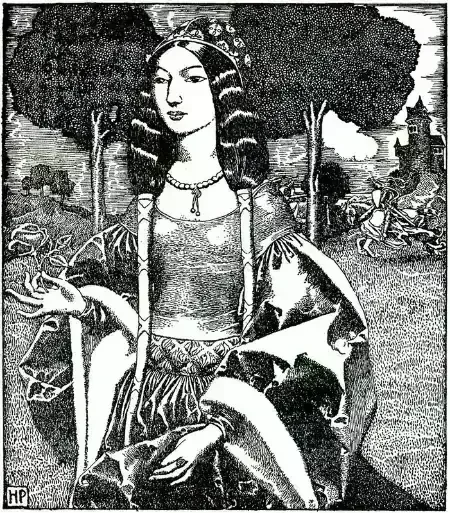Guinevere

Also often written in Modern English as Guenevere or Guenever, Guinevere was, according to Arthurian legend, an early-medieval queen of Great Britain and the wife of King Arthur. First mentioned in literature in the early 12th century, nearly 700 years after the purported times of Arthur, Guinevere has been portrayed across a spectrum of characterizations—from a fatally flawed, villainous, and opportunistic traitor to a noble and virtuous lady. The motif of Guinevere's abduction, or of her being rescued from peril, appears prominently in many versions of the legend.
The earliest datable appearance of Guinevere is in Geoffrey of Monmouth's pseudo-historical British chronicle Historia Regum Britanniae, where she is seduced by Mordred during his rebellion against Arthur. In later medieval French Arthurian romances, a major storyline follows the queen's tragic love affair with her husband's chief knight and trusted friend, Lancelot, indirectly causing Arthur's death and the kingdom's downfall. This concept first appeared in nascent form in the poem Lancelot before its expansion in the prose cycle Lancelot-Grail, which formed much of the narrative core of Thomas Malory's seminal English compilation Le Morte d'Arthur. Other recurring themes include Guinevere's barrenness, the scheme of her evil twin to replace her, and the hostility displayed by her sister-in-law Morgan.
Guinevere remains a popular character in numerous adaptations since the 19th-century Arthurian revival. Modern authors, typically following Malory's portrayal, often define her character through her relationship with Lancelot.


